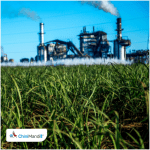New York [US], November 13 (ANI): The UN Food and Agriculture Organization (FAO) has said the global food trade should hit an all-time record high in both volume and value terms.
A new report released on Thursday said that the global food import bill should extend beyond USD 1.75 trillion by the end of 2021. This will be a 14 per cent increase from the previous year, and 12 per cent higher than the previous forecast, UN News reported.
According to FAO’s new Food Outlook, trade-in foodstuffs has shown “remarkable resilience” to disruptions throughout the pandemic, but rapidly rising prices, pose significant challenges for poorer countries and consumers.
The increase is driven by higher price levels of internationally traded food commodities and a threefold increase in freight costs, according to the report.
Developing regions account for 40 per cent of the total and their food import bill is expected to rise by 20 per cent compared to the year before. Even faster growth is expected for Low-Income Food Deficit Countries (LIFDCs).
In terms of products, developing regions are facing sharp increases in basic staples such as cereals, animal fats, vegetable oils and oilseeds. Meanwhile, in developed regions, high-value foods, such as fruits and vegetables, fishery products and beverages are driving the bulk of the increases.
The report said that prospects for major cereals remain robust, with record harvests expected for maize and rice. Cereals for consumption, and animal feed, should grow even faster.
The outlook expects some improvements in the supply situation for oilseeds and derived products, but their end-season stocks could remain below average. World sugar production should rebound, after three years of contraction, but still be under the global consumption level, the report said.
According to the report, meat production should expand, triggered by a swift rebound in China, especially pig meat. A growth slowdown in trade is likely, caused by declines in leading importing regions, mostly Asia and Europe, it added.
Meanwhile, milk production is forecasted to grow, with anticipated increases in all major producing regions, led by Asia and North America. (ANI)












